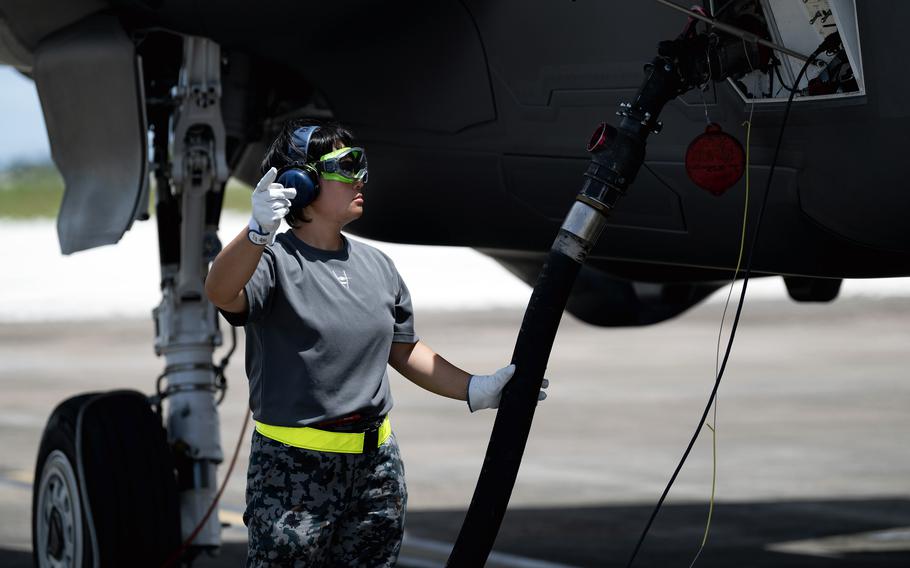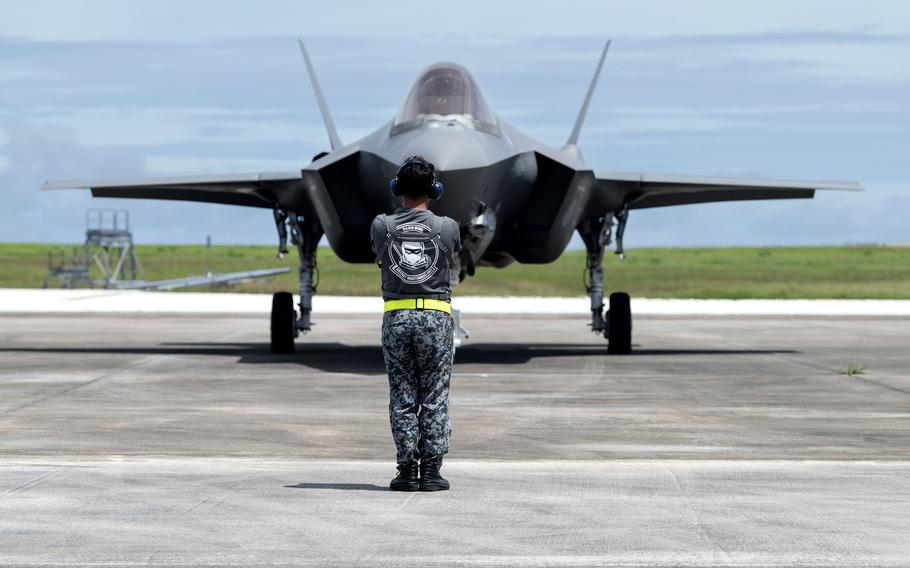
A Japanese airman refuels an F-35A Lightning II during a hot-pit refuel at Andersen Air Force Base, Guam, Aug. 28, 2023. (Lauren Clevenger/U.S. Air Force)
Japanese airmen refueled an F-35A Lightning II with the engines running on Guam last month, the first “hot-pit” refueling during the inaugural overseas deployment of Japan’s fifth-generation fighter jets.
The F-35A successfully refueled on-the-go Aug. 28 at Andersen Air Force Base, according to a news release Friday from the Air Force’s 36th Wing. The refueling operation marked a first for a Japanese F-35 outside of Japan, an Air Self-Defense spokesman told Stars and Stripes by phone Monday.
Hot pit refueling permits more aircraft sorties by reducing aircraft turn-around time by up to 45 minutes, according to the wing.
Japanese F-35s trained outside their home country for the first time, from Aug. 21 to Sept. 2, to enhance “deployment capabilities,” the Air Self-Defense Force said in an Aug. 14 news release. The trip to Guam and Australia also allowed them to consider future rotational deployment opportunities and “further deepen defense cooperation,” the release said.
Japanese aircrews trained at Andersen and Royal Australian Air Force bases in Tindal and Darwin in Australia’s Northern Territory; other activities included long-distance navigation and aerial refueling, according to the Japanese news release.
Around 160 personnel and four F-35As from Japan’s 3rd Air Wing at Misawa Air Base took part in the training. A C-130 Hercules airlifter, a KC-767 refueler and two C-2 Greyhound cargo planes from various Japanese bases flew in support, the release said.

A Japanese airman marshals an F-35A Lightning II during a hot-pit refuel at Andersen Air Force Base, Guam, Aug. 28, 2023. (Lauren Clevenger/U.S. Air Force)
The training allows Japan to “project air power more rapidly” and enables the U.S. to call on them as “partners in the case of a contingency situation,” 36th Wing’s release said.
“As their military shifts from a defensive only to an offensive capable force, things like hot-refueling and rapid sortie generation aligns them with the U.S. operational capabilities and that of our other partners in the region like Australia and South Korea,” Master Sgt. Clarence Graves, section chief of fuels operations for 36th Logistics Readiness Squadron, said in the Air Force release.